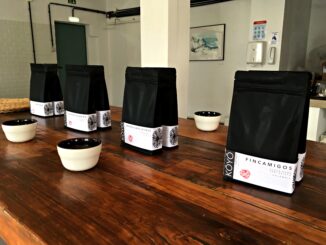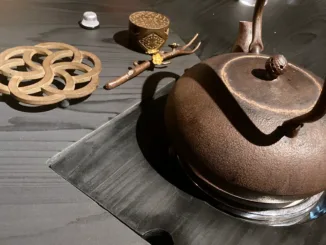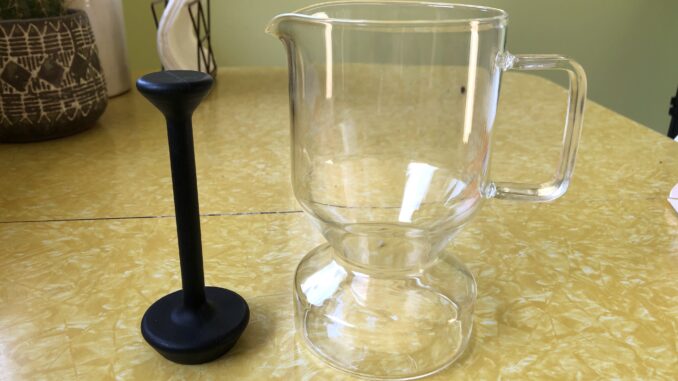
The Cupping Brewer is a vessel designed for minimal-waste, filter-free coffee sampling.
BY KATRINA YENTCH
BARISTA MAGAZINE ONLINE
Photos courtesy of Katrina Yentch
I’ve always found it kind of heartbreaking to watch cupping bowls of delicious coffee get tossed through a strainer in the sink. It seemed counter-intuitive for a sustainably focused industry to toss out a ton of product. And for the coffees I truly enjoyed the most, I’d find myself sipping on them with my cupping spoon like soup, wishing I had a way to drink them up without the influence of any brewing method. So, the Cupping Brewer seems like a perfectly logical solution to being waste-free and germ-free.
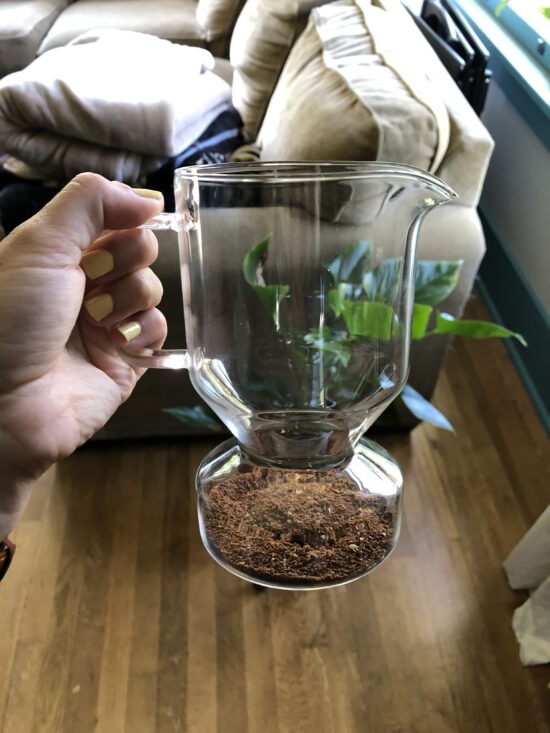
What Is the Cupping Brewer and How Does It Work?
The Cupping Brewer is a product by longtime coffee pro (and fellow “Test Drive” columnist) Josh Taves, who recognized a need to update the traditional practices of coffee cupping to a process less clunky and customized for the experience.
The Cupping Brewer is a sleek and simple pitcher-shaped glass vessel. Its intended use is for cupping coffee, but also for drinking the coffee-cupping liquid after cupping is complete. In order to make that possible, a plunger accompanies the vessel, which users plug into a space in the middle of the brewer to prevent coffee grounds from escaping. After breaking the crust and scraping it out like a standard cupping session, plug the plunger and pour the top portion of coffee into a cup to enjoy.
A Longtime Product Geared for the Future of Coffee
The Cupping Brewer has been around for a long time—since the mid-2000s. That being said, it’s surprising that this product wasn’t on more people’s radars during the first year of COVID, especially when the SCA had developed new extensive cupping protocols to address the practice’s admittedly germ-inducing tendencies. Regardless of whether or not the traditional cupping process has returned to the table (and in some cases, it has, but in my experience it rarely happens outside of an internal staff setting these days), the Cupping Brewer is as relevant as ever.
The prosumer has emerged out of the pandemic and is demanding specialty-coffee tools for the home. And the traditional cupping practice of using several hyper-specifically shaped bowls with several coffees doesn’t seem to accommodate this. Thus, the Cupping Brewer makes it easier for both coffee professionals and home users to try out one coffee at a time, AND drink it afterward. It just makes sense.
The Simplicity of the Cupping Brewer
One of the features I enjoyed most in this brewer was its simplicity. It’s truly a foolproof way of setting up a coffee tasting—doable even for those who have never cupped coffee. A three-step illustrated set of directions on the website instruct to pour 30 grams of coffee with 500mL of hot water, wait four minutes, then break and discard the crust before plugging and pouring the end results.
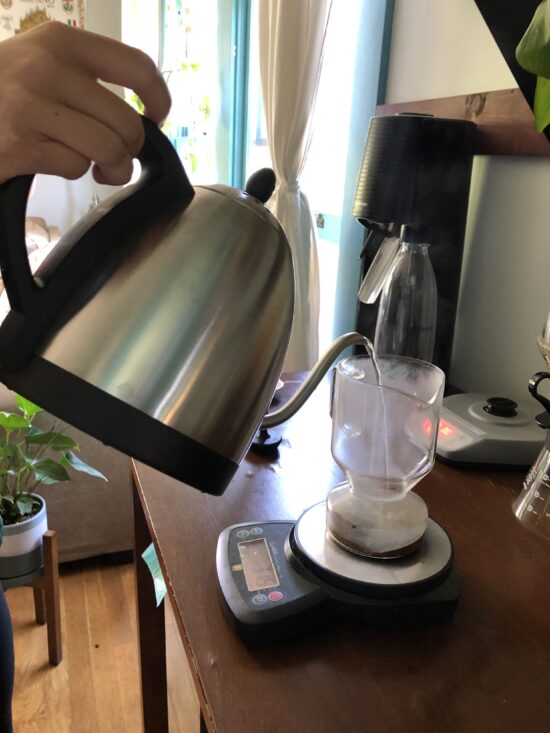
Some more cupping-savvy features of the vessel include an intentional shape that seems inspired by wine decanters, in order to really emphasize aroma during the dry-ground evaluation. This shape also separates the coffee grounds from the brewed liquid more clearly, making it harder for them to end up in the final cup. However, this also makes the vessel extremely difficult to clean by hand. You either need a dishwasher or a handle brush to clean the inside of the Cupping Brewer.
A Cupping Brewer Intended for Drinking
In addition to its difficulty in cleaning, I’d say the only other setback of this brewer is that you can’t use the actual amount of coffee suggested by the SCA to test coffee. After trying a 1:18 ratio of 11 grams of coffee with 200mL of water, it resulted in kind of an awkward amount of coffee to dispense into a cup. The coffee itself ended up not shining as much as it would have with a higher amount of ground coffee used. Therefore, you should be prepared to drink a pretty full cup of coffee when using this product, as opposed to the small sip-and-slurp amount from a standard cupping. So in that sense, it might be hard to sample several coffees this way.
All in all, the Cupping Brewer produces a delightful cup of coffee, whose taste reminds me of coffees brewed with an Able Brewing Kone. It addresses some big problems with coffee cupping in a truly straightforward way, and I think it’d make a useful tool for coffee shops that get samples from roasters and want a quick way to taste test them. However, for quality control and sampling several coffees, it may be better to take the traditional route.


